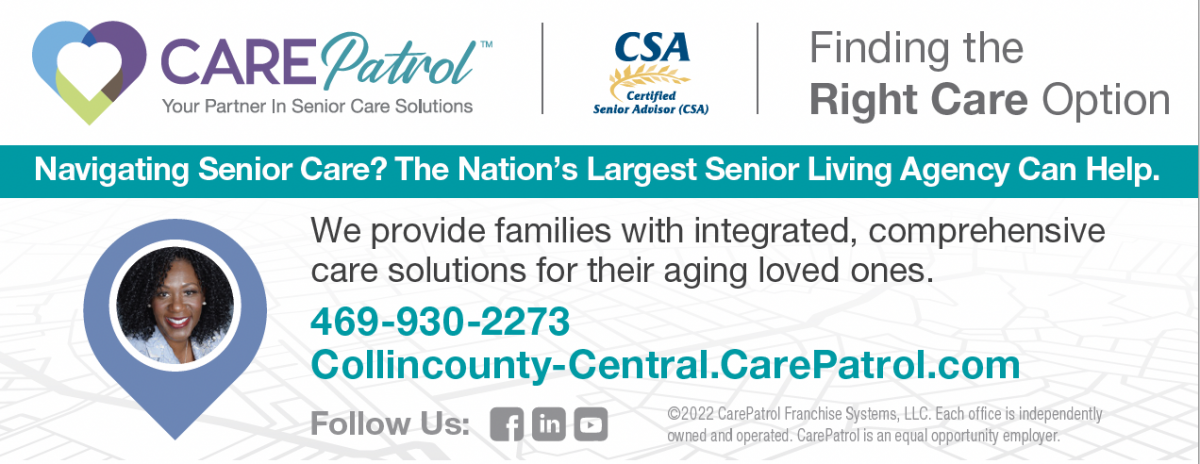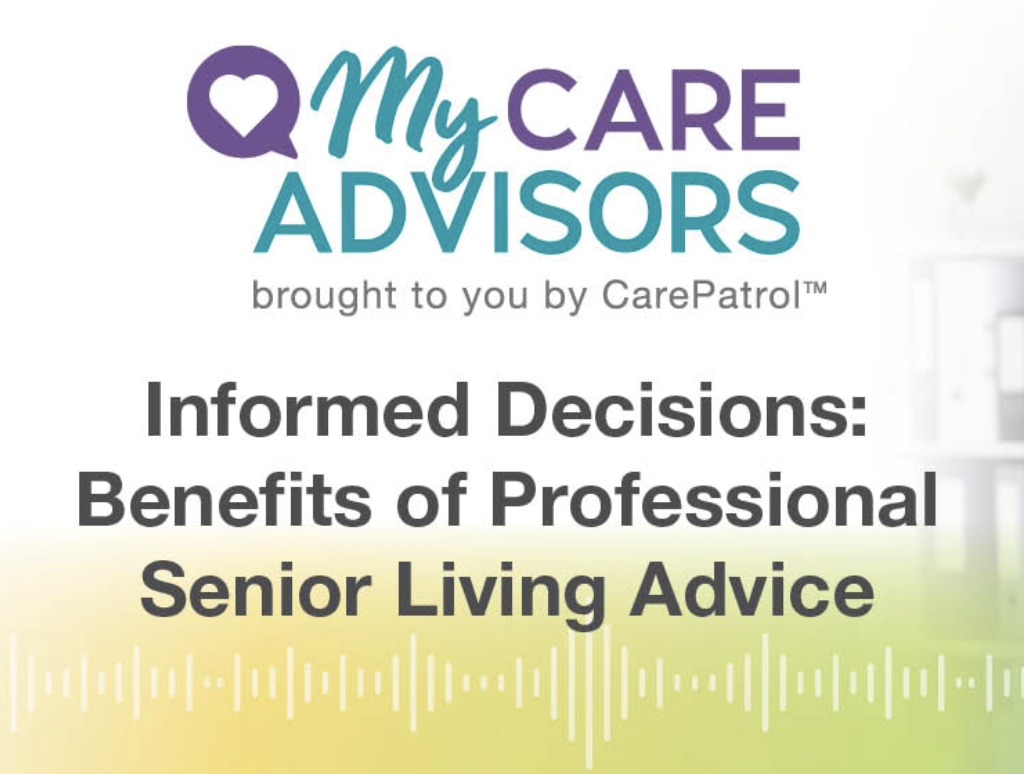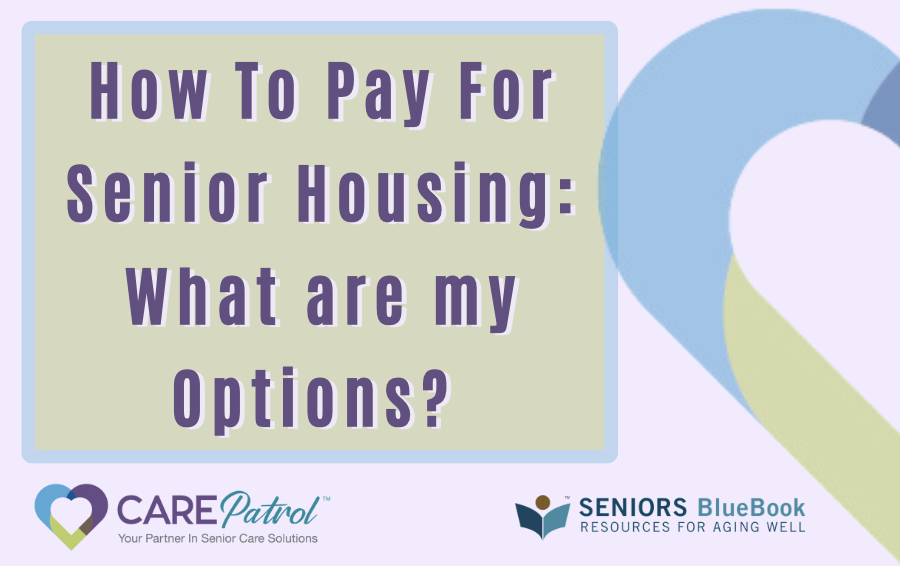How to Pay for Senior Housing: What are my Options? When it comes to caring for our loved ones, we want to provide them with the best possible care. However, with the cost of care constantly increasing, it can be challenging to know how to pay for it. Fortunately, there are a variety of payment options available to help you afford the care your loved one needs. Here are some of the most common options: Private Pay Private pay simply means that you have the financial resources to pay for care without assistance from other programs. It is sometimes referred to as self-pay. Private pay is a good option for those who have long-term care insurance, savings, retirement accounts, or other assets that can be used to pay for care. Keep in mind that the cost of care can be high. Private pay may be a great option initially; however it may not be sustainable over the long term. Future planning should also be taken into consideration. Assisted Living Most assisted living communities offer a choice of care levels, all-inclusive or fee-for-service pricing. All-inclusive pricing means that a single monthly fee will cover room and board and includes three meals per day, housekeeping, laundry services, WIFI, electricity, transportation, and daily activities. Fee-for-service pricing means a resident pays only for those services they use. Upon the resident's arrival, the staff at the assisted living community will conduct a thorough assessment to evaluate their specific needs and preferences and determine the most appropriate level of care and assistance for them. The communities are specifically designed to provide seniors with varying levels of care to meet their individual needs. By being aware of the different care options available, residents can choose the most appropriate one for them, whether it is an all-inclusive or fee-for-service pricing model. These communities aim to provide a comfortable and supportive living environment that promotes the wellbeing and independence of their residents. For those who require minimal help, lower levels of care (level 1) are available, which may include medication administration and supervision from skilled professionals such as LPNs and RNs. Higher levels of care (level 3+), on the other hand, are designed for residents who require more hands-on assistance with activities of daily living, such as bathing, dressing, and eating, and may involve personal care from CNAs. By offering these different care options, assisted living communities can provide tailored support to each resident to help them live as independently and comfortably as possible. To clarify further, there are three main categories of care provided in assisted living communities: supervisory care, personal care, and directed care. For supervisory care, skilled professionals such as Licensed Practical Nurses (LPNs), Registered Nurses (RNs), and Certified Nursing Assistants (CNAs) offer general supervision to residents, including assistance with administering prescribed medication and intervening in emergencies. Personal care, on the other hand, involves primary caregivers like CNAs, who assist with Activities of Daily Living (ADLs) such as eating, bathing, toileting, and dressing. These caregivers are essential for residents who cannot perform these activities independently. Finally, directed care is designed for seniors who require more structured programs and services. In these cases, the community or residential care home organizes activities and services for seniors who are incapable of recognizing danger, expressing a need, making primary decisions, or asking for assistance. According to the Genworth 2021 Cost of Care Survey, the median annual cost for assisted living in Dallas-Fort Worth is $50,340 per year. We have seen a significant rise in these costs over the past two years, with most communities implementing an annual increase of 3-13% per year. The total cost of residing in an assisted living community is determined by several factors such as the resident's required level of care and the number of support levels they need. For instance, an apartment in the community may be priced at $3,200, with an additional $500 per month for level 1 care. If a resident's health deteriorates, necessitating more support, they may move up to level 2 care, which incurs an additional cost of $1,000 per month, bringing their total monthly bill to $4,700. Another cost associated with moving into an assisted living community is the one-time, non-refundable community fee, which ranges from $1,500 to $3,000 or more. This fee covers maintenance costs such as painting, dent removal, carpet cleaning, and landscaping and is charged by most communities. It's important for residents to understand all of the costs associated with moving to an assisted living community, the community fee, the apartment fee, and the fee for their preferred level of care to make informed decisions regarding their care and financial obligations. VA Aid & Attendance VA Aid & Attendance is a benefit that many families overlook. It's available to veterans or surviving spouses who need additional money to help care for ailing parents or loved ones. This benefit is a pension benefit and is not dependent upon service-related injuries for compensation. VA Aid and Attendance benefits provide monthly payments added to the amount of a monthly VA pension for qualified Veterans and survivors. It is a monthly pension benefit that provides tax-free payments to Veterans who served during wartime, who need help with daily activities, or are housebound. In addition to being available for Veterans, single surviving spouses and dependent children may also be eligible to receive this benefit. To qualify for this pension, the Veteran or their surviving family need to meet the means-tested income and asset thresholds. You may be eligible for the VA Aid and Attendance benefit if you get a VA pension and you meet at least one of these requirements. You need another person to help you perform daily activities, like bathing, feeding, and dressing, or You have to stay in bedor spend a large portion of the day in bedbecause of illness, or You are a patient in a nursing home due to the loss of mental or physical abilities related to a disability, or Your eyesight is limited (even with glasses or contact lenses you have only 5/200 or less in both eyes; or concentric contraction of the visual field to 5 degrees or less) VA Aid & Attendance can help pay for care in the home, nursing home, or assisted living community. The monthly benefit amount depends on the veteran's or surviving spouse's eligibility, and the amount received changes yearly. For the year 2023, a single veteran may receive a monthly benefit ranging from $1,432 to $2,229. A couple may qualify for a benefit of up to $2,642 per month, while a married couple where both spouses are veterans may be eligible for a monthly benefit of up to $3,536. VA Housebound Benefits You may be eligible for Housebound benefits if you get a VA pension and you spend most of your time in your home because of a permanent disability (a disability that doesnt go away). To be eligible as a veteran, an individual must have completed a minimum of 90 days of active duty, with at least one day served during a time of war. Combat service is not a requirement for veteran eligibility. When applying for benefits as a surviving spouse of a veteran, the individual is not required to have been married to the veteran at the time of their death. However, the surviving spouse must be single at the time of application and cannot have remarried since November 1, 1990. It is important to note that you cant get Aid and Attendance benefits and VA Housebound benefits at the same time. Understanding how to qualify and apply for these benefits can be confusing and could take 12 to 18 months to receive without the assistance of a VA Accredited Claim's Agent. Fortunately, the VA will pay retroactively from the date of application. There are a limited number of Accredited Claims Agents who have been appointed by the Veterans Administration to offer assistance for pension-related matters. Families seeking help with these matters should be aware that only these accredited professionals are legally authorized to provide such services. For complete information and eligibility requirements on all VA pension benefits and rates vist https://www.va.gov/pension/eligibility/ Long-Term Care Insurance Long-term care insurance is a type of insurance that helps cover the costs of long-term care services, such as nursing home care or in-home care, for individuals who can no longer perform activities of daily living (ADLs) on their own. This type of insurance can provide financial protection and peace of mind for both the policyholder and their family. According to the Genworth 2021 Cost of Care Survey, the national median annual cost for a private room in a nursing home is $105,850. The national median hourly rate for a home health aide is $27, and the median annual cost for an assisted living facility is $53,775. These costs can vary widely depending on the location and level of care needed. Long-term care insurance is designed to help cover the costs of long-term care services, depending on the specific policy and the level of care needed. Some policies may also offer benefits for alternative care options, such as adult day care or respite care. An individual must have purchased it before they need it and must have activities of daily living (ADLs) needs and be currently in need of service. Some policies have other requirements such as the number of beds and a nurse on staff. The average benefit is $100 per day, but many policies have inflation riders (normally around 5% per year). A policy may cover $100 per day now but may be worth $150 per day in 10 years. It's important to note that long-term care insurance policies can be expensive and may not be the right choice for everyone. Factors such as age, health, and financial situation should be taken into consideration when deciding whether to purchase a policy. Additionally, some policies may have limitations and exclusions, so it's important to thoroughly review and understand the terms of any policy before purchasing. Long-term care insurance can offer valuable protection to individuals who want to safeguard their assets and ensure they have access to quality care when needed. However, it's crucial to conduct thorough research and seek guidance from a financial advisor or insurance expert before committing to a policy. For families, long-term care insurance can be an effective way to ensure their loved ones receive excellent care while also safeguarding their assets and lifestyle. Retirees and those nearing retirement who have worked hard to save money may also benefit from long-term care insurance as a means of preserving their financial resources. Furthermore, long-term care insurance may prove to be a valuable resource for individuals who lack the financial means to pay for such costs or a support system to care for them. Medicaid Medicaid pays partially or fully for assisted living costs at selected communities in some states, including Texas. There is usually a waiting period of 60 to 90 days to apply and receive benefits. Medicaid is typically only accepted at the more modest care communities in the area. To qualify for Medicaid, an individual must meet certain income and asset requirements. Seniors and families needing to transition right away, may need to pay 4-12 months as private pay before receiving the government assistance. It is against the law for Certified Senior Living Consultants to be compensated for referrals to government housing and nursing homes placements. Summary When it comes to paying for care options, families have several options to consider, including private pay, Veterans Aid & Attendance, Long-Term Care Insurance, and Medicaid. Assisted living can be a more cost-effective option for long-term care compared to nursing homes or in-home care, with costs varying based on location, apartment size, and level of care needed. Families should also consider the different pricing structures and levels of care available at each assisted living community, as well as the one-time non-refundable community fee. If you're considering senior care options for a loved one, it's important to have a trusted partner in the process. A certified senior advisor will conduct thorough research and due diligence to identify communities that are a perfect match for you to receive proper care and age in place. The CSA, being an expert, will accompany seniors and their families during community tours to help ask and answer questions and ensure that they find exactly what they need for the short-term and long-term, they won't simply give you a list of 5-6 communities to visit on your own. Local advisors possess valuable information about the communities and their residents, including the executive directors and nursing directors, to help identify which ones have high turnover, don't stand by their promises, or don't have the right attitude and desire to care for residents. A strong team culture centered around resident care can only be achieved if communities train their teams to provide appropriate care for each resident. Unfortunately, lead generators often trick seniors and their families into partnering with them, only to bombard them with calls and provide recommendations without having ever visited the locations they're suggesting and without providing the necessary support, education, and tours to navigate the transition successfully. Seniors moving to an assisted living facility must learn the nuances of navigating the controlled environment for a successful transition. Tracy Toomer, a Certified Senior Advisor (CSA), CDP, MBA, with CarePatrol of Collin County-Central is here to help. Tracy can provide you with the guidance and support you need to make informed decisions in finding a wholistic approach to safer senior living, care and aging in place. Sources: "2021 Cost of Care Survey," Genworth, accessed March 29, 2023, https://www.genworth.com/aging-and-you/finances/cost-of-care.html. Department of Veterans Affairs. (n.d.). Veterans Pension Rates. Retrieved March 29, 2023, from https://www.va.gov/pension/veterans-pension-rates/ Authors:Tracy Toomer, Certified Senior Advisor (CSA), CDP, MBA, CarePatrol Collin County Central, Board Member, Alzheimers Association Dallas & Northeast Texas Chapter; Board Member, National Placement Referral Alliance Assosciation Texas. LinkedIn: https:///www.linkedin.com/in/tracy-toomer-certified-senior-advisor-csa-mba-aa37b615Kathleen Warshawsky, BSN, RN, Publisher Seniors BlueBook Greater Dallas, LinkedIn: https://www.linkedin.com/in/kathleenwbsnrn/





